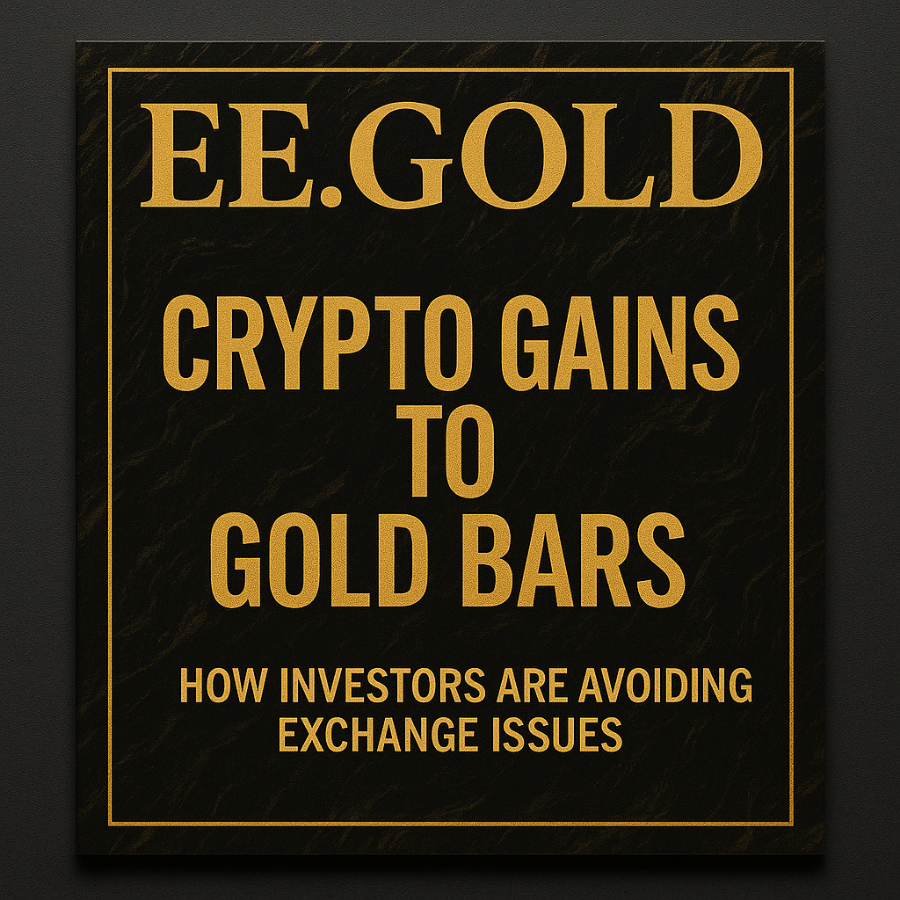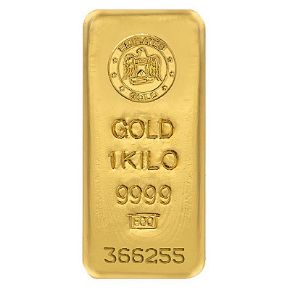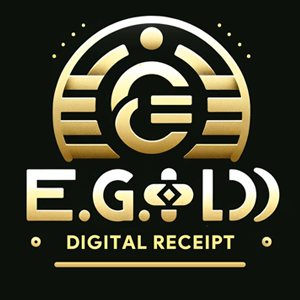
Crypto Gains to Gold Bars: How Investors are Avoiding Exchange Issues and Reducing Taxes
As the world of finance continues to evolve rapidly, investors have found new and innovative ways to preserve their wealth and grow their portfolios. In recent years, cryptocurrencies, particularly Bitcoin and Ethereum, have gained significant attention due to their volatility, potential for high returns, and, importantly, their ability to offer an alternative to traditional financial systems. Alongside cryptocurrencies, traditional assets like gold have remained a reliable store of value for centuries, often serving as a hedge against inflation and economic uncertainty.
But as the financial landscape shifts, a growing number of investors are beginning to blend these two worlds, moving their crypto gains into traditional assets like gold bars. This strategic shift offers not only diversification but also a way to avoid issues with exchanges, and most notably, reduce tax liabilities. In this article, we will explore how crypto investors are navigating these challenges and leveraging both digital and physical assets to secure their financial futures.
The Rise of Cryptocurrency and Its Appeal to Investors
Cryptocurrency, particularly Bitcoin, has become a household name over the past decade. With its decentralized nature and the promise of financial autonomy, digital currencies offer an appealing alternative to traditional investments. Bitcoin’s meteoric rise in price, particularly during periods of global economic instability, has led many investors to view cryptocurrencies as a new asset class capable of delivering extraordinary returns. Other coins, such as Ethereum, Litecoin, and newer altcoins, have followed suit, each offering unique use cases and innovations within the blockchain ecosystem.
For many investors, cryptocurrencies represent a way to capitalize on the market's volatility. Unlike stocks or bonds, which are often tied to the performance of traditional economies, digital currencies are largely unaffected by government policies and can be traded 24/7 on various platforms. While some investors have taken a speculative approach to crypto, others have opted for longer-term holding strategies, trusting in the long-term potential of blockchain technology and decentralized finance (DeFi).
However, despite the allure of potentially massive returns, there are significant challenges and risks associated with cryptocurrency investments. One of the most pressing concerns for many investors is the issue of exchanges and their reliability.
The Challenges of Crypto Exchanges: Security, Reliability, and Trust
While the world of crypto has opened up countless opportunities for investment, it has also come with a host of challenges, especially when it comes to exchanges. Centralized exchanges (CEXs), like Coinbase, Binance, and Kraken, have become the go-to platforms for buying, selling, and trading cryptocurrencies. However, these exchanges have faced growing scrutiny over issues such as security breaches, regulatory concerns, and the risk of losing access to funds.
Security is one of the most significant concerns. Over the past decade, several high-profile hacks and breaches have led to millions of dollars in losses for investors. In 2014, Mt. Gox, one of the largest Bitcoin exchanges at the time, was hacked, resulting in the loss of 850,000 Bitcoins. More recently, platforms like Binance and FTX have been involved in scandals that have raised doubts about the security of centralized exchanges. For crypto investors who are already wary of traditional financial institutions, relying on centralized exchanges can feel like a risky proposition.
Additionally, the regulatory landscape surrounding cryptocurrency exchanges is still evolving. Governments around the world are scrambling to develop frameworks for the taxation and regulation of digital assets. In some countries, exchanges are required to report users' transactions to tax authorities, while in others, there is little to no regulation. This patchwork regulatory environment creates uncertainty for investors, as the rules governing cryptocurrency can change at any time.
The risk of exchange issues, coupled with the complexities of understanding crypto tax obligations, has led many investors to seek alternative ways to store and transfer their assets.
The Appeal of Gold as a Hedge Against Crypto Risks
Amid these concerns, many crypto investors are looking to traditional assets, such as gold, as a safe haven for their gains. Gold has long been viewed as a store of value, particularly during times of economic instability or high inflation. Unlike digital currencies, gold is a tangible asset that is not subject to the same level of volatility. In times of economic crisis, gold tends to hold its value or even appreciate, making it a reliable hedge against market downturns.
Moreover, gold has a history of being immune to issues related to exchange volatility and the regulatory uncertainty that plagues the cryptocurrency market. Investors who move their crypto gains into physical gold bars can rest assured that their wealth is not reliant on the performance of digital exchanges or governments’ shifting regulatory policies.
In many ways, gold serves as the anti-crypto investment — stable, secure, and trusted by generations of investors. The shift from crypto to gold is also driven by the desire for privacy and control. Gold, when held in physical form, is not subject to surveillance or intervention from third-party financial institutions or governments, making it an attractive choice for investors looking to shield their wealth from prying eyes.
How Investors Are Moving Their Crypto Gains into Gold
With the volatility of cryptocurrency markets and the risks associated with exchanges, many investors are choosing to convert their crypto holdings into physical gold as a way to both secure and preserve their wealth. This process is typically carried out in two ways: through the sale of cryptocurrencies for fiat currency, followed by the purchase of gold, or through specialized services that allow for the direct conversion of cryptocurrencies into precious metals.
1. Crypto-to-Fiat-to-Gold Conversion
The most common method for crypto investors to move their gains into gold is by first converting their cryptocurrency holdings into fiat currency. This can be done by selling the crypto on a centralized or decentralized exchange. Once the fiat currency is obtained, it can be used to purchase gold in various forms, such as coins, bars, or certificates.
This process is relatively straightforward, but it does involve exposure to traditional financial institutions, such as banks, which may add costs and delays. Investors also need to be mindful of the potential tax implications of selling their cryptocurrency. In many jurisdictions, selling crypto for fiat currency triggers a taxable event, as the sale is considered a capital gain.
2. Direct Crypto-to-Gold Transactions
For those looking to avoid the step of converting crypto into fiat, some services now allow for the direct conversion of cryptocurrencies into physical gold. Companies like Goldmoney, for example, enable customers to buy gold using Bitcoin, Ethereum, and other digital currencies. These services often provide the option to store the gold in secure vaults, offering additional security and ease of access.
By using these platforms, investors can avoid the complexities of dealing with fiat currency, and the transaction itself may be more seamless. This method also allows for a quicker conversion of crypto into gold, bypassing any potential delays or fees associated with the exchange process. However, as with any investment, it is essential to research the legitimacy and security of these services before committing funds.
The Tax Implications of Crypto-to-Gold Transactions
One of the primary reasons that investors are shifting from crypto to gold is to reduce their tax liabilities. Taxation on cryptocurrency gains can be high, particularly in countries that treat crypto as property rather than currency. In the United States, for example, cryptocurrency is taxed as property by the Internal Revenue Service (IRS), meaning that any sale or exchange of crypto can trigger a capital gains tax event.
By converting crypto gains into gold, investors may be able to minimize their tax burdens, depending on the jurisdiction and how the transaction is structured. In some cases, gold may be subject to lower taxes than cryptocurrency, particularly when it comes to long-term capital gains.
In addition, the physical nature of gold means that it is not always tracked or taxed in the same way as digital assets. For example, if an investor chooses to hold physical gold outside of a financial institution, they may be able to avoid certain taxes or reporting requirements. However, it is important to note that tax laws vary widely by country, and investors should consult with a tax professional before making such a move.
The Future of Crypto and Gold: A Dynamic Investment Strategy
As cryptocurrencies continue to mature and the global financial landscape evolves, it is likely that the integration between digital currencies and traditional assets like gold will become more commonplace. We may see further innovations in how crypto and gold can be used together to create a more secure and diversified portfolio.
For now, investors are balancing the high-risk, high-reward nature of cryptocurrencies with the stability and security of physical gold. By doing so, they are not only protecting their wealth from exchange issues and market volatility but also strategically reducing their tax liabilities.
As technology continues to advance, it is possible that new financial products and platforms will emerge to make the process of converting crypto into gold even more streamlined and tax-efficient. Whether through direct crypto-to-gold exchanges or other creative solutions, investors will continue to explore new ways to protect and grow their assets in an increasingly complex world.
In conclusion, the shift from crypto gains to gold bars is a powerful strategy that allows investors to navigate the complexities of the digital currency market while securing their wealth. The risks associated with cryptocurrency exchanges, combined with the high tax burden on crypto transactions, have led many investors to seek the stability and privacy offered by traditional assets like gold. By embracing both digital and physical assets, investors can create a balanced portfolio that offers both growth potential and long-term security. As the world of finance continues to evolve, this dynamic investment strategy will likely remain a key pillar for savvy investors looking to protect their financial future.
NOTE
This Content is the copyrighted content of EE.GOLD. All rights are reserved. You are welcome to share or use our content only by including direct links to our website. Any other form of reproduction, distribution, or use without proper attribution is strictly prohibited.
This Content is intended solely for educational purposes. The information provided does not constitute financial or investment advice.
Please note that Digital Storage Receipt, Secure Storage Solutions, and Physical Gold Sales are the only services offered by EE.GOLD.
We strictly adhere to government regulations and are firmly against all illegal financial or investment activities globally.
For further inquiries, feel free to contact us through our official channels.










.png)

